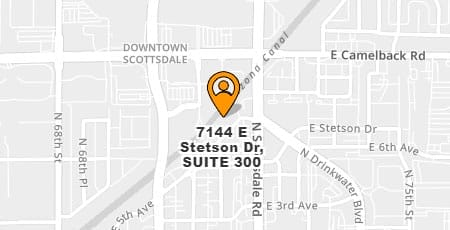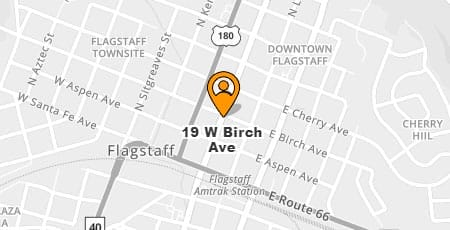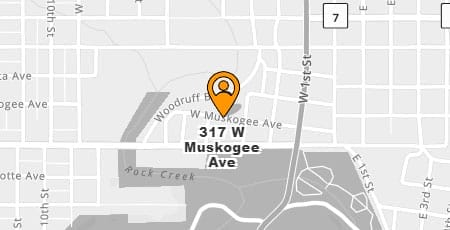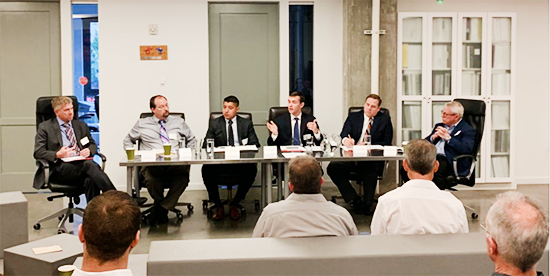
From left, Joshua Hayes, CPA and partner at Eide Bailly, Todd Pryor, Superior town manager, Fernando Garcia, economic development specialist for the City of Casa Grande, Dan Gauthier, attorney at Rose Law Group, Cameron Carter, partner and director of Transactions at Rose Law Group, and Jeffrey Fairman, economic development specialist for the City of Eloy
By Callan Smith | Rose Law Group Reporter
Tuesday morning at Rose Law Group was all about opportunity zones, when the firm hosted 62 people at an in depth discussion with a panel of experts moderated by firm President and Founder, Jordan Rose at its Scottsdale office.
Opportunity Zone investment is a long-term investment vehicle with three tax brackets and a tax date built into the law of December 31, 2026. On January 1, 2027, the investor will pay the percentage cut of the tax on the investment based on the length it has been held within one of the three different brackets, Dan Gauthier, Rose Law Group attorney handling a lot of opportunity zone projects, said.
First, if an investor holds the investment of five years, capital gains reinvested are reduced by 10 percent. Second, if an investor holds the investment seven years, the taxable amount of capital gains reinvested is reduced by 15 percent. Third, if the investment is held ten years, the amount of capital gains reinvested is reduced by 15 percent and no tax is owed on appreciation.
“The investor makes an investment to a fund. The fund buys qualified property, holds it for ten years, it sells after ten years, the appreciation on that initial investment whatever it has gained over that ten years or more is tax-free,” Gauthier said.
There are many questions revolving around the program that the IRS is expected to provide clarification. One question comes from property owners who own property in an opportunity zone. Owners would not reap any benefits unless they sold the property and could retain 19.99 percent interest in the fund.
Joshua Hayes, CPA and partner at Eide Bailly, delved into the potential of an owner becoming a tenant and taking advantage of the law, stating it’s not prohibited.
However, “the sale of the eighty percent, give or take interest, does need to be to an unrelated party. It needs to be an arm’s length transaction,” Gauthier said.
One of the biggest hurdles with the program are the unanswered questions, “especially the business piece,” Hayes said, and “in terms of real estate we’re getting close to understanding.”
However, the business side is “touchy.”
Hayes said for every question on real estate investment into opportunity zones there’s twenty on business. For example, there’s a test in the program that says fifty-percent of business needs to come within the zone. It’s unclear at this time what happens to a business that may create a product then ship it elsewhere or do work beyond the zone.
The IRS had a hearing Valentine’s Day and adjourned saying they would provide a second round of guidance, which is coming soon. Hayes expects that to happen this month or April with another public comment period occurring after and final regulations by the end of summer.
A question came from the audience about how a fund is structured and registered.
“The fund itself is merely a new entity, LLC, partnership, S-corp. The self-certification happens on the tax side with the IRS,” Cameron Carter, Rose Law Group partner and Director of Transaction Department, said.
Congress made it easy for anyone to set up a qualified fund, and wants the program widely used, Hayes said.
“It is made very easy, it’s made purposely to literally file a piece of paper with a tax return and you qualify.”
Robby Richards, owner of Richards Development, LLC, manages Phoenix Opportunity Zone Fund, LLC and has been working with municipalities such as Casa Grande, Superior and Eloy, looking for opportunities in secondary and tertiary markets to develop mixed-used commercial, light industrial and residential.
“We will hopefully be working on our first project, which is a forty-acre site at I-8 and I-10, and that project is aimed at supporting the Nikola and Lucid vehicle plants,” Richards said.
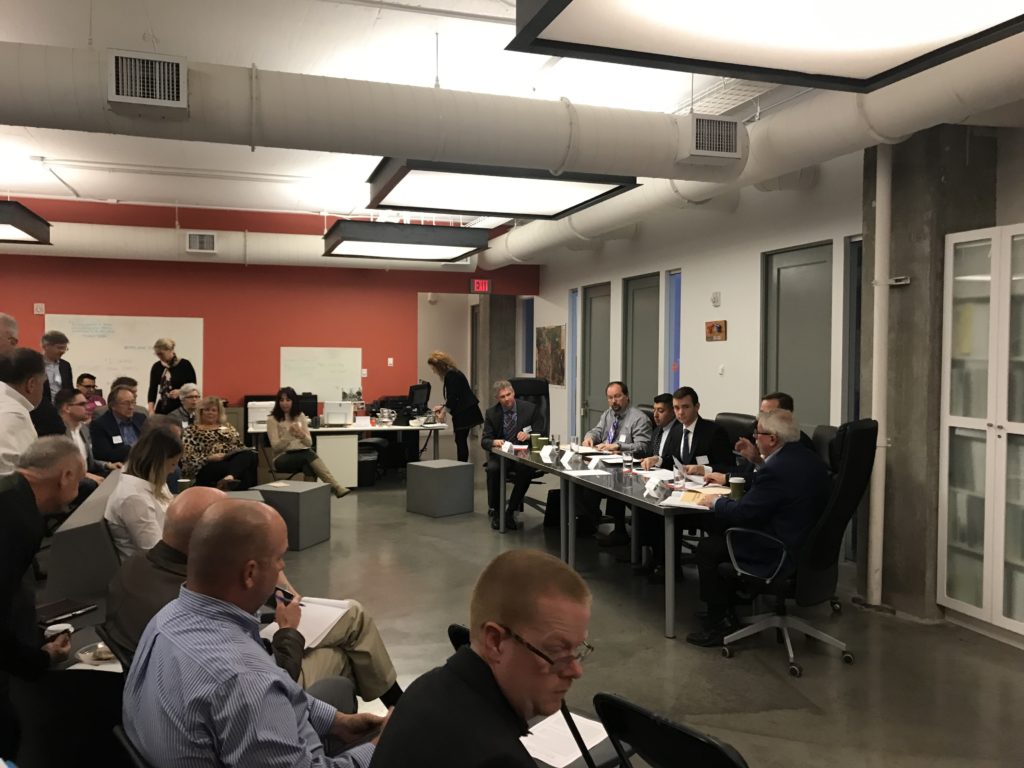
Opportunity Zone panel at Rose Law Group.
Casa Grande has 9200 acres as part of an opportunity zone divided by two different sites.
“The one where we see the most action is the site where we have five industrial parks. That specific area is also home to the Central Arizona Commerce Park, which is around 690 acres and is also home to Lucid Motors,” Fernando Garcia, economic development specialist for the City of Casa Grande.
The entire town of Superior is in an opportunity zone, Todd Pryor, Superior town manager, said.
“Superior is only fourteen-hundred acres; it also has another five-hundred acres that could be acquired through a land exchange with Resolution Copper.”
Eloy’s opportunity zones are along the I-10 corridor, “the area that we have set aside for most all of our industrial, commercial growth, and some housing areas are included in that,” Jeff Fairman, economic development specialist for the City of Eloy, said.
To view Arizona’s opportunity zones, per the Arizona Commerce Authority, click here:


